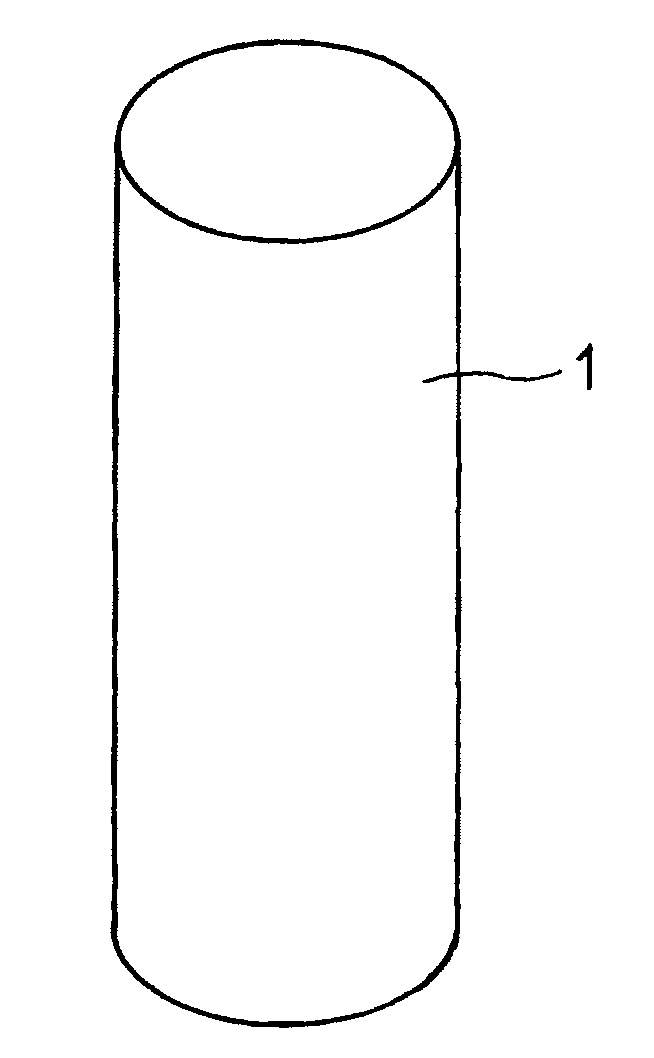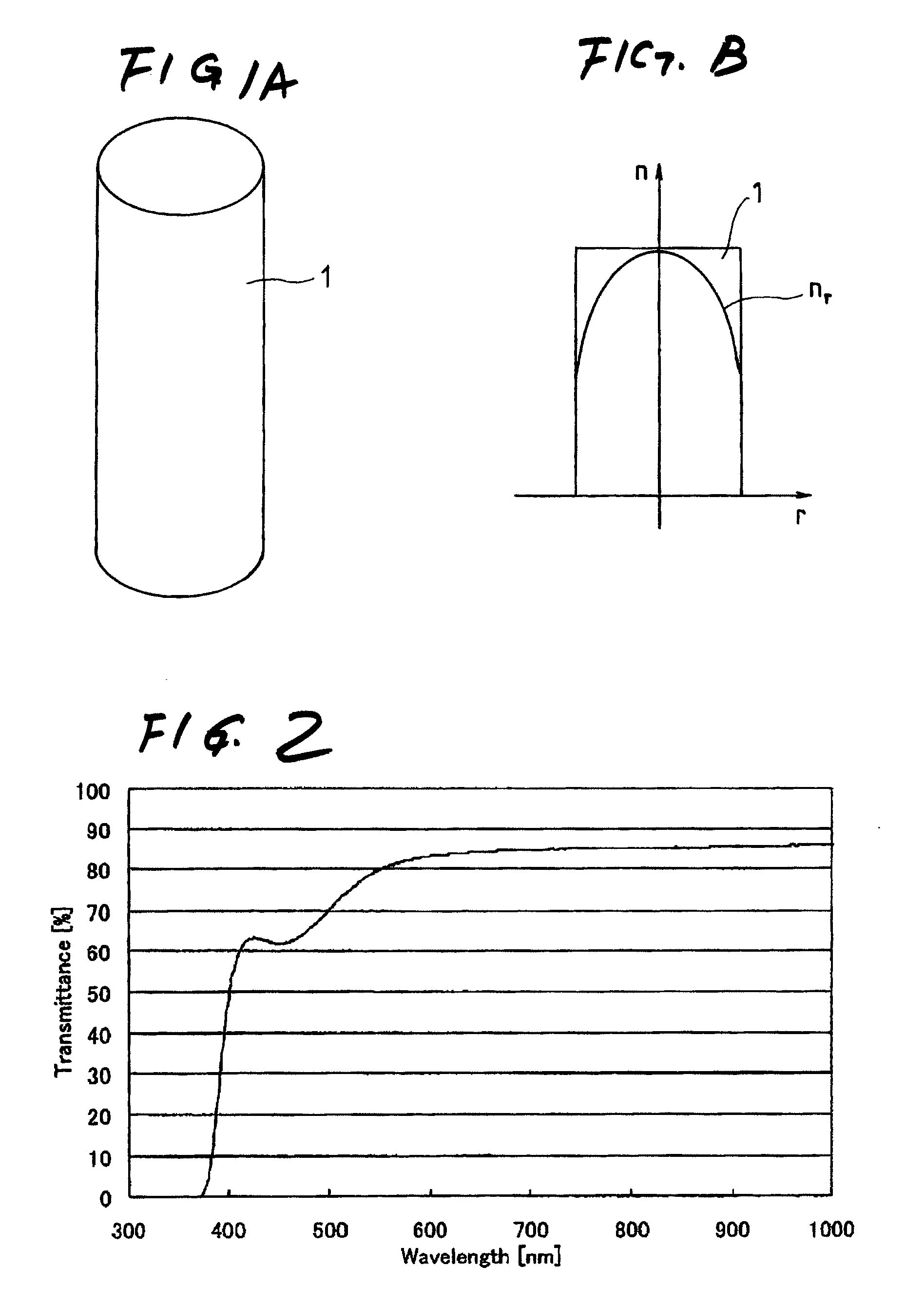Base glass composition for graded-refractive-index rod lens and graded-refractive-index rod lens produced from the same
a technology of base glass and index rod, which is applied in the field of glass composition, can solve problems such as imposing a heavy burden on the environmen
- Summary
- Abstract
- Description
- Claims
- Application Information
AI Technical Summary
Benefits of technology
Problems solved by technology
Method used
Image
Examples
examples 1 to 19
[0054]Raw materials were mixed according to each of the makeups of Examples 1 to 19 shown in Tables 1 to 3, and the mixture was melted to produce a base glass composition. The melting was conducted at 1,000-1,200° C. This base glass, which had not undergone an ion-exchange treatment, was examined for refractive index and glass transition point. A measurement of refractive index was made with a Pulfrich refractometer at a measuring wavelength of 656.3 nm by the total-reflection critical method. Glass transition point was read in a thermal-expansion curve by determining the temperature corresponding to a bending point appearing in the curve.
TABLE 1Example No.123456ComponentSiO240.030.022.034.032.040.0[mol %]B2O310.020.030.020.020.018.0Li2O14.016.013.513.013.013.5Na2O10.010.010.09.011.010.0MgO7.010.07.06.06.04.0ZnO8.00.06.07.07.04.0TiO27.010.07.06.06.04.0Nb2O50.00.00.00.00.00.0Ta2O50.00.00.00.00.00.0La2O30.00.00.00.00.00.0SrO0.00.00.00.00.00.0BaO0.00.00.00.00.00.0Bi2O34.04.04.05.05.06....
examples 20 and 21
[0067]Raw materials were mixed according to each of the makeups of Examples 20 and 21 shown in Table 3, and the mixture was melted to produce a base glass composition. Example 20 is a glass makeup having a B2O3 content of 5% by mole. Example 21 is a glass makeup having a Bi2O3 content of 8% by mole, These glass compositions have assumed a color. However, the coloration is in such a low degree that the lenses are usable with a light having a limited wavelength.
[0068]Graded-refractive-index rod lenses were produced from rod-form glasses having the makeups of Examples 20 and 21 by ion exchange in the same manner as in Examples 1 to 19. The properties of these lenses could be evaluated. The results obtained are also shown in Table 3.
[0069]The graded-refractive-index rod lenses produced from the compositions of Examples 20 and 21 had an angular aperture θ of 16.0°.
example 22
[0070]Raw materials were mixed according to the makeup of Example 22 shown in Table 3, and the mixture was melted to produce a base glass composition.
[0071]Example 22 is a glass makeup containing 1% by mole SrO and 1% by mole BaO.
[0072]Like the glass compositions of Examples 7 to 19, the glass composition of Example 22 has a higher Bi2O3 content than in Examples 1 to 6. However, glass coloration could be sufficiently inhibited, and the lens properties could be satisfactorily evaluated. The results obtained are also shown in Table 3. Because this glass contains SrO and BaO, it is thought that these components contribute to a-decrease in melting temperature and an increase in refractive index.
PUM
| Property | Measurement | Unit |
|---|---|---|
| Angle | aaaaa | aaaaa |
| Angle | aaaaa | aaaaa |
| Current | aaaaa | aaaaa |
Abstract
Description
Claims
Application Information
 Login to View More
Login to View More - R&D
- Intellectual Property
- Life Sciences
- Materials
- Tech Scout
- Unparalleled Data Quality
- Higher Quality Content
- 60% Fewer Hallucinations
Browse by: Latest US Patents, China's latest patents, Technical Efficacy Thesaurus, Application Domain, Technology Topic, Popular Technical Reports.
© 2025 PatSnap. All rights reserved.Legal|Privacy policy|Modern Slavery Act Transparency Statement|Sitemap|About US| Contact US: help@patsnap.com


